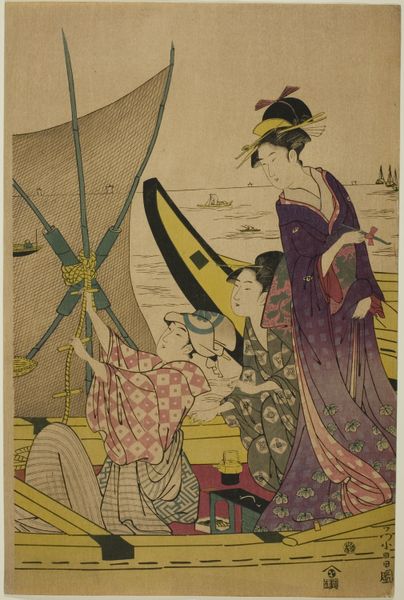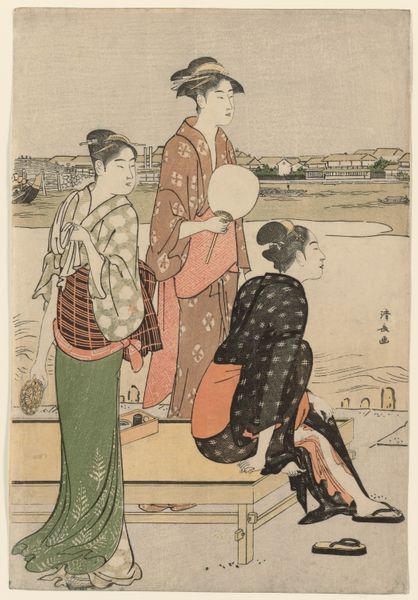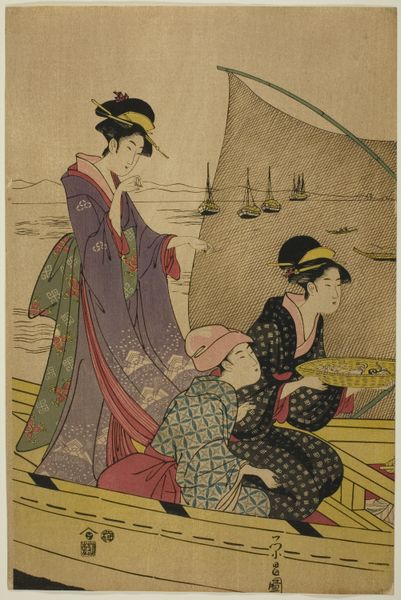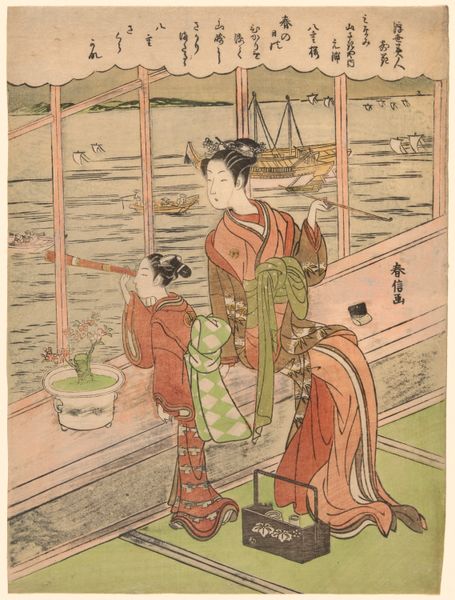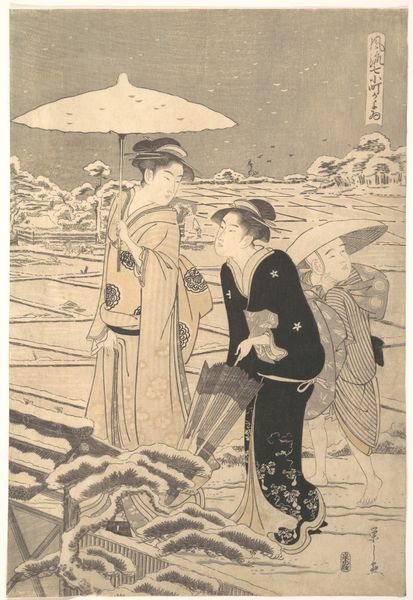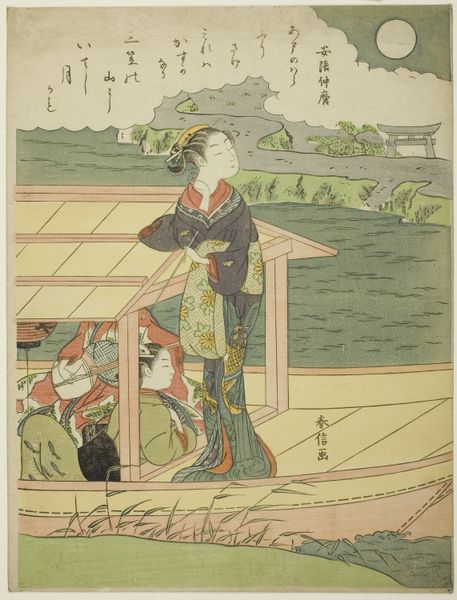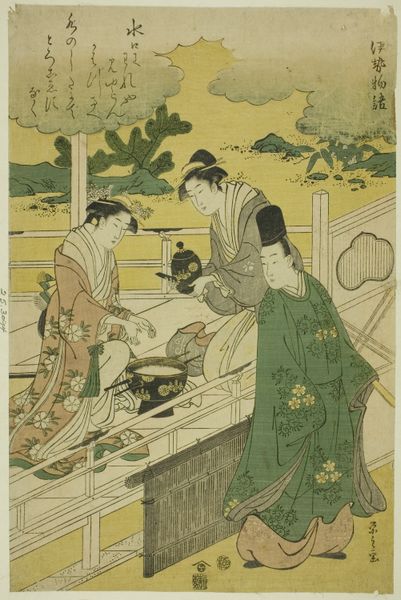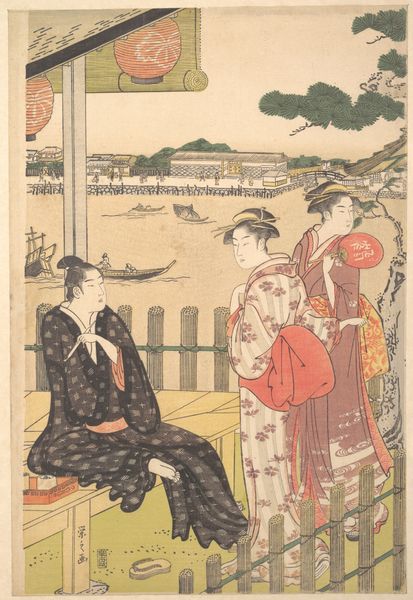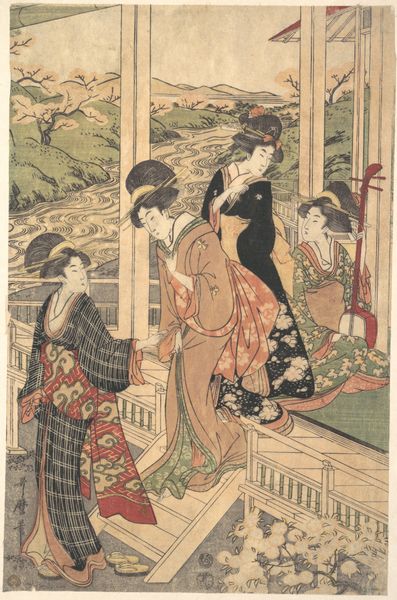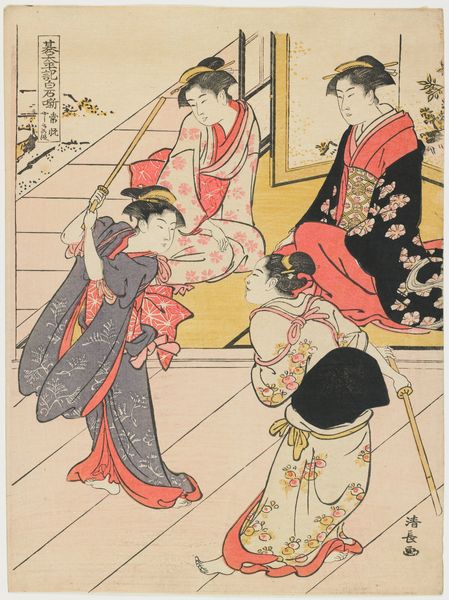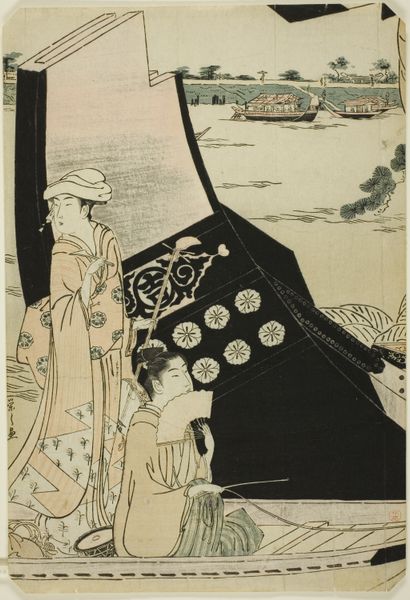
print, etching, woodblock-print, engraving
#
ink painting
# print
#
etching
#
asian-art
#
ukiyo-e
#
figuration
#
woodblock-print
#
genre-painting
#
engraving
Dimensions: 38.2 × 25.6 cm
Copyright: Public Domain
Curator: Here we have Chōkōsai Eishō's "Women on a Fishing Boat," a woodblock print made around 1790. What's your immediate take on this piece? Editor: It feels unexpectedly still. I mean, they’re on a boat, presumably moving, but the whole scene has a calm, almost contemplative air. Curator: Exactly. Eishō captures a fleeting moment, a genre scene transformed by the elegance and refined style that characterizes the ukiyo-e tradition. These prints often depict the ephemeral beauty of everyday life. Note how he elevates this simple fishing outing through intricate patterns and graceful composition. Editor: And that elevated perspective... almost like we're hovering, peering down at this private moment. How much did the availability of prints influence the viewing habits of the period? Curator: Mass production undeniably played a pivotal role, allowing the broader populace access to artistic imagery and shaping their perceptions. Woodblock prints were often commissioned by wealthy patrons or merchants eager to showcase their appreciation for art and culture. They also provided a crucial window into popular culture and fashionable trends. Editor: I love the subtle interactions between the women. There’s one shielding her face with a fan, and another, maybe offering flowers? It hints at a story, doesn't it? Were such genre paintings frequently veiled with societal commentary? Curator: Absolutely. Though seemingly focused on leisure, these prints were not devoid of social meaning. Depictions of women, particularly those from the pleasure quarters, often subtly challenged societal norms and expectations. Consider, for example, how Eishō presents these women with agency and self-possession, defying typical stereotypes. It's the ambiguity of intention which speaks the most clearly to me, creating endless narrative possibilities for the viewer. Editor: So, the image functions as a kind of tableau vivant, encapsulating both an observed scene and a quiet rebellion. It's fascinating how much history and social critique can be conveyed through seemingly simple genre scenes. A brief encounter, carefully preserved in ink and color, offers a lasting glimpse into the society of the time. Curator: Indeed, this woodblock print not only encapsulates the artistry of Chōkōsai Eishō but also illuminates the complexities of Japanese society during the late 18th century. Editor: This has certainly given me new appreciation for looking past face value!
Comments
No comments
Be the first to comment and join the conversation on the ultimate creative platform.
